Silverfish Bug Solutions: Eliminate & Prevent Infestations
Understanding Silverfish: Habits and Habitats
Silverfish are nocturnal insects known for their destructive feeding habits, targeting books, wallpaper, and clothing. Recognizable by their silvery-grey and blue scales, with a tapered, fish-like appearance, these pests can wreak havoc in moist, dark environments.
Understanding the nature of silverfish is the first step in combating their presence in your home.
What Are Silverfish?
Silverfish (Lepisma saccharina) thrive in environments with high humidity, which is why they're commonly found in kitchens, bathrooms, basements, and attics. Their diet primarily consists of carbohydrates, particularly sugars and starches, which they readily find in paper, glue, clothing, and even dandruff. Despite their small size, silverfish are capable of surviving in various climates, making them a pervasive problem in homes across the UK.
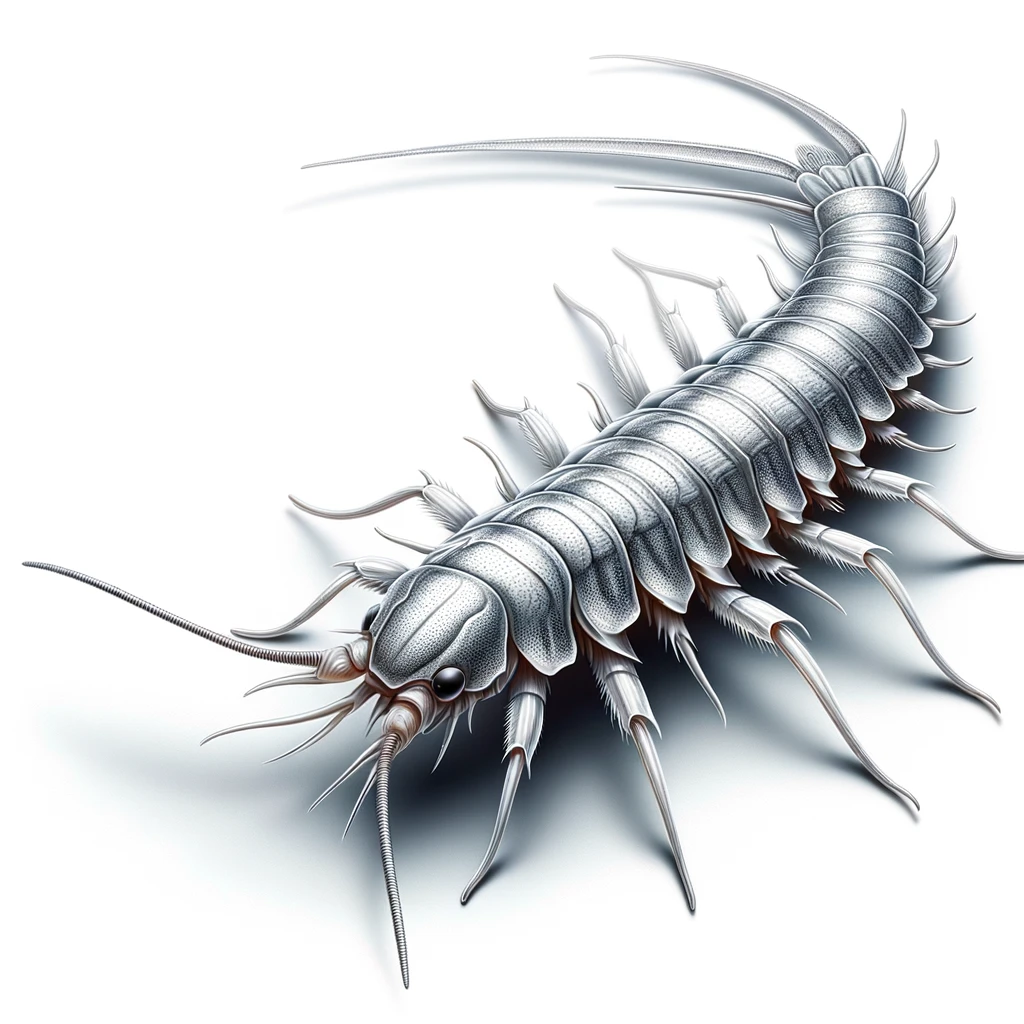
Where Do Silverfish Come From?
Silverfish infestations often start from a few individuals hitching a ride on items brought into the home or by exploiting cracks and crevices in the building's exterior. Once inside, they find conducive environments—areas with moisture and ample food sources—to establish their colonies.
Regular inspections and maintenance can help identify potential entry points and habitats, aiding in the prevention of these unwanted guests.
Identifying Silverfish Presence in Your Home
Early detection of silverfish is crucial for preventing significant damage to your belongings. Knowing what signs to look for can help you identify an infestation before it becomes widespread.
Silverfish Infestation Signs
The most telling sign of a silverfish infestation is the damage they leave behind. Look for irregular holes in wallpaper, books, or textiles, along with yellowish stains, scales, and feces that resemble black pepper.
Active at night, silverfish are elusive during the day, so these physical signs are often the first indication of their presence.
Are Silverfish Harmful?
While silverfish do not transmit diseases, their feeding can contaminate food and cause allergies in some individuals. Moreover, the damage to personal belongings, particularly items of sentimental or monetary value, can be considerable.
Understanding that silverfish pose no direct harm to humans, but are harmful to possessions, is important in gauging the necessary response to their presence.
Common Carpet Pests Sections
Effective Strategies for Silverfish Elimination
Eliminating silverfish from your home involves a combination of immediate treatments and long-term strategies to prevent their return.
Here’s how to rid your living spaces of these persistent pests effectively.
How to Get Rid of Silverfish
The battle against silverfish begins with reducing the humidity in your home, as these pests thrive in moist environments.
Dehumidifiers, fans, and proper ventilation can significantly deter their presence.
For immediate action, consider using desiccants like diatomaceous earth, which can be spread in areas where silverfish are likely to travel.
Insecticidal sprays specifically designed to target silverfish can also be effective, especially when applied in hidden areas, such as cracks and crevices, behind baseboards, and in attic spaces.
Special Focus: Silverfish on Carpet
Carpets can harbour silverfish, particularly in less trafficked areas of the home. Regular vacuuming, especially with a vacuum equipped with a HEPA filter, can help remove eggs and adults from the fibres.
For carpets, consider a targeted application of natural repellents or boric acid powder, ensuring the product is safe for the type of carpeting and the occupants of the home, including pets.
Preventing Silverfish: Long-Term Strategies
Prevention is crucial in ensuring your home doesn’t become hospitable to silverfish again. Here are effective long-term strategies to keep these pests at bay.
Why You Should Kill Silverfish
Beyond the immediate nuisance, silverfish can cause significant damage over time, destroying books, clothing, wallpaper, and more.
Their ability to go unnoticed for long periods allows them to breed and increase their numbers, making early eradication and ongoing prevention efforts critical.
Long-Term Prevention Tips
Maintaining low humidity levels in your home is essential for deterring silverfish. Seal cracks and crevices to prevent entry from the outside. Regularly clean and declutter your home to reduce hiding spots and potential food sources.
Consider using natural deterrents, such as cedar shavings or lavender sachets, in areas prone to silverfish activity.
Cleaning Methods
Advanced Carpet Maintenance Strategies
Advanced carpet maintenance goes beyond regular cleaning and involves strategies that ensure the longevity and durability of your carpets. Using steam cleaners for carpets is a highly effective method for deep cleaning and sanitizing. This section provides in-depth information on how to use these tools effectively, along with tips and tricks for keeping your carpets looking and feeling new.
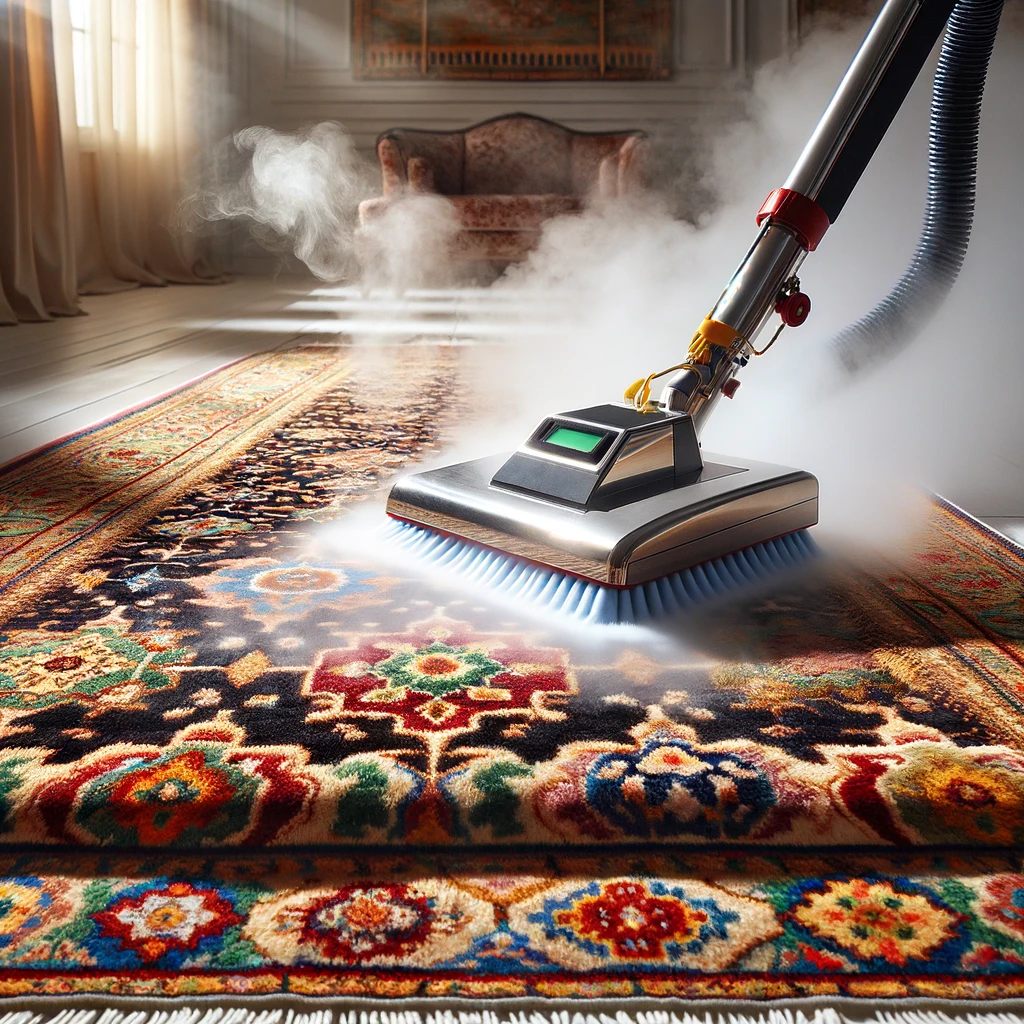
Steam Cleaning
Steam cleaning for Persian rugs involves a gentle yet effective method of deep cleaning, removing dirt and allergens without damaging delicate fibers, preserving beauty and longevity.
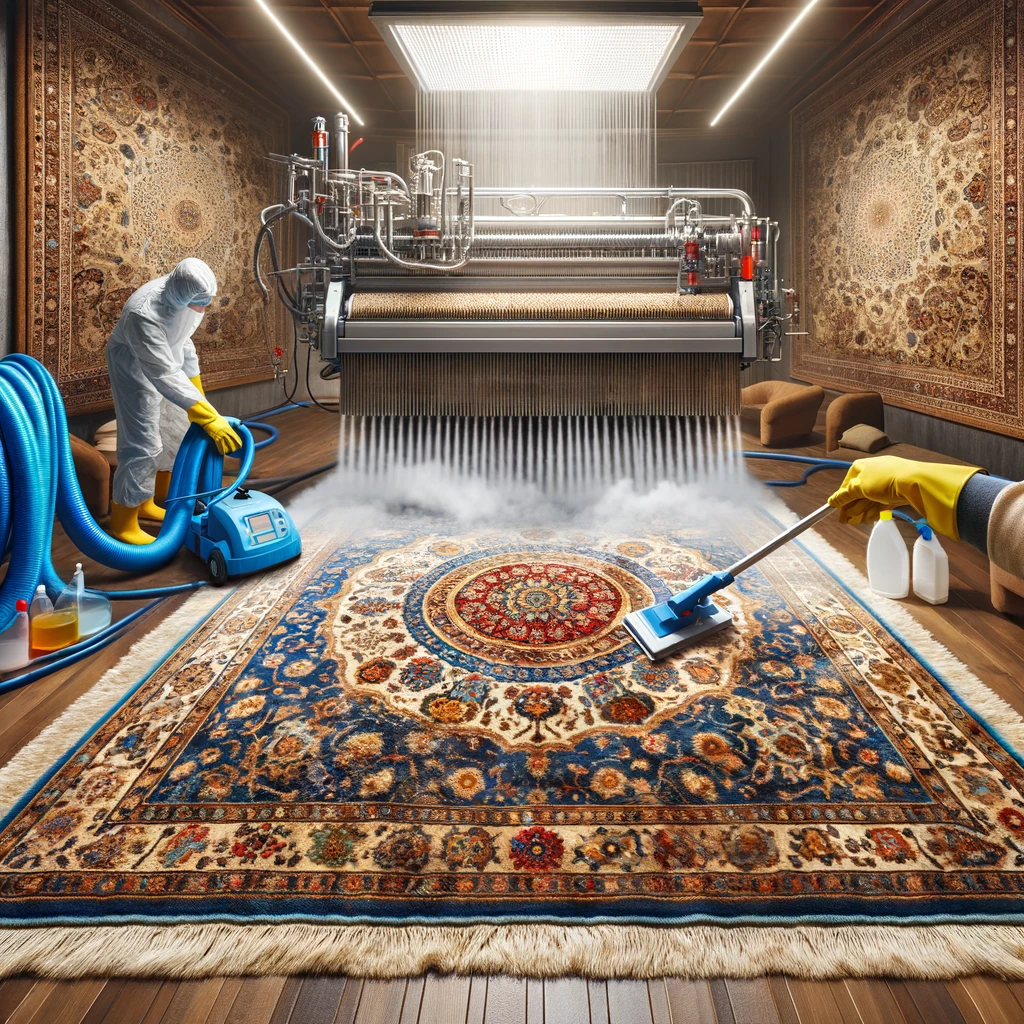
Deep Cleaning
Deep cleaning Persian rugs requires specialized techniques to remove deeply embedded dirt and restore their vibrant colors, ensuring the preservation of their intricate designs and durability.
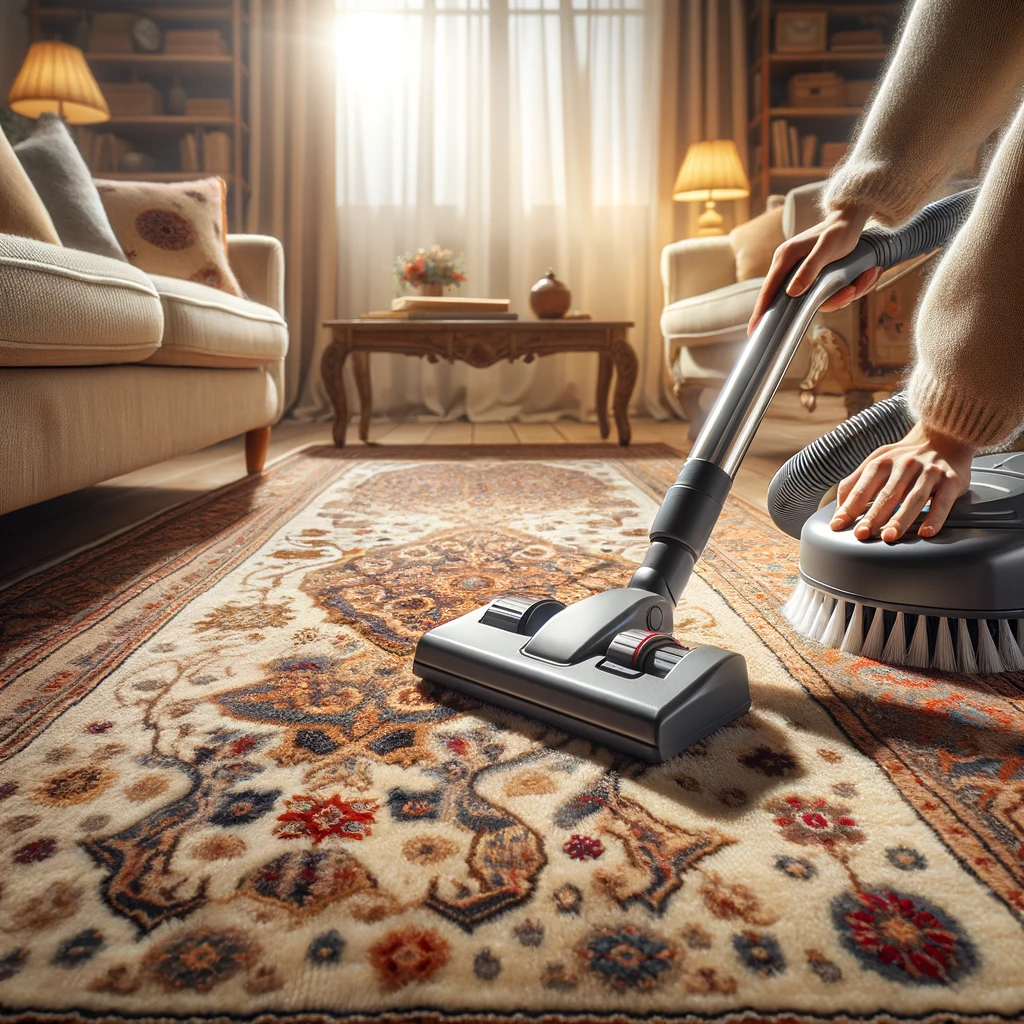
Vacuum Cleaning
Vacuum cleaning for Persian rugs focuses on removing surface dust and debris gently, protecting the rug's intricate patterns and delicate fibers from wear and damage.

Stain Removal
Stain removal for Persian rugs addresses common damage issues like spills and spots, using careful techniques to preserve colors and fibers while eliminating blemishes.
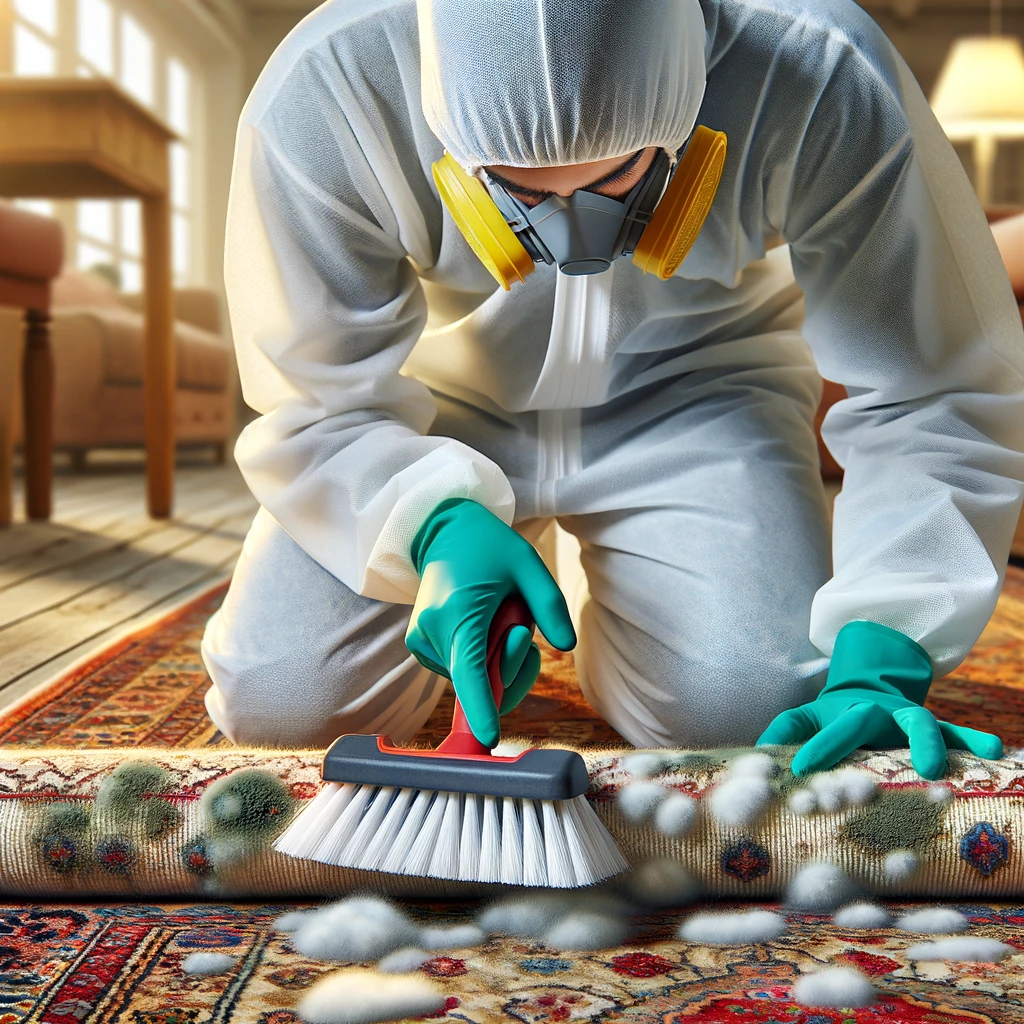
Mold Removal
Mold removal for Persian rugs tackles common damage issues such as mildew and fungus, employing safe methods to eradicate growth and restore rug health without harm.
Joe Rugs - Carpet Expert
Hello! I'm Joseph Rugs, the founder of CarpetJoe.com and your guide through the intricate world of carpets. Born and raised in London with a deep-rooted passion for art and culture, I've explored the globe to bring the rich tapestry of carpet weaving right to your screen. My academic background in arts and humanities from Oxford has fueled my curiosity, leading me to uncover the stories behind every knot and weave. As a family man, my adventures are shared with my loved ones, enriching our lives with every piece of art we encounter. Join me as we explore the beauty and craftsmanship of carpets together.
Carpet Repair & Restoration Guides
Carpet damage can range from minor issues like small burns or stains to more significant problems such as large tears or widespread wear.
Identifying the type of damage is the first step in determining the most suitable repair method.
Master carpet repair with our guides. Learn about fixing burns, holes, and wear in carpets and rugs, including DIY patch repairs and professional restoration tips.
Explore my Collection of Persian & Oriental Culture Inspired Gift Ideas found on Amazon
Frequently Asked Questions
Silverfish are small, wingless insects known for their destructive feeding habits on carbohydrates and proteins found in various household items.
Silverfish typically enter homes through outdoor cracks and crevices or by hitching a ride on infested items brought inside.
Regular vacuuming, the use of diatomaceous earth, and maintaining low humidity levels are effective strategies for eliminating silverfish in carpets.
Silverfish infestations often occur in homes with high humidity levels and abundant food sources, such as paper and fabric.
While not harmful to humans or pets, silverfish can damage household items and contaminate food sources.
Eliminating silverfish prevents damage to books, clothing, wallpapers, and helps maintain a clean home environment.
Reducing humidity, sealing entry points, cleaning, and using insecticidal treatments are effective methods for getting rid of silverfish.
While uncommon, silverfish can climb into beds if there are food sources available, such as starches and sugars from skin cells.
Not necessarily. Silverfish are attracted to moisture and food sources, which can be present in both clean and cluttered homes.
Finding silverfish in your home is relatively common, especially in areas with high humidity or abundant paper goods and textiles.








